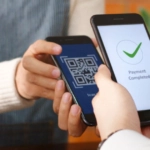Uncover the differences of banking systems around the world
If only every country had identical banking systems. That would make things easier, but it isn’t likely to happen. So, global businesses need to understand each country’s system. Because even small payment errors can cause big problems. Read on to learn about the differences and how Payoneer can help!

In an ideal world, each country would use the same currency, the same formats for banking information, and well the same standards for tax info, ID, and business-to-business payments. That would simplify everything.
But that is not about to happen any time soon.
If you do business with just one country other than your own, it might be relatively easy to figure out their unique standards and peculiarities.
If you’re selling to Sweden, for example, you would know that the currency is the SEK, the Swedish Kroner, and that Swedish bank accounts come in several possible formats. If the account number is 11 digits long, the first 4 digits are the bank code, and the next 7 digits represent the actual account number. But if the account number is 15 digits in length and starts with the number 8, the first 5 digits are the bank code.
But let’s say you are also doing business in India, and need to wire funds there to pay for development work. You would also need to know that India’s Account Tax Number is structured under a new series based on the following company parameters and uses the Phonetic Soundex code algorithm to ensure it is unique; PetFull name of the company. Date of birth or incorporation. Status: Father’s name. It goes on from there.
Add more countries, and everything gets more complicated. In Japan, account holders’ names can be entered in Kanji or Hiragani characters. In Argentina, and in Bangladesh, you must preserve leading zeros in account numbers. For the Russian Federation, paying in Rubles, patronymic names must be entered in English, or in Cyrillic, depending.
The difficulty is, seemingly small errors in making international payments can create failures and delays that can interfere with business, and require inordinate amount of time to untangle and rectify. Especially if you’re working with partners in multiple countries worldwide.
That’s why more and more buyers, sellers and global companies are opting to handle their global payments and receipts via Payoneer.
On Payoneer’s platform, everything works through a Payoneer ID: no matter where you’re paying to or receiving funds from. You can ignore all the complexity and quirks of your business partners’ banking systems and save valuable time in the process.
We at Payoneer have teams of people who live and breathe the details of international banking. They understand the difference between dealing with trading euro in Brazil, versus the Brazil real, so you don’t have to. All the complexity and complications are managed automatically in Payoneer.
You’re free to do business. Wherever it takes you. While we sweat the details.
Related resources
Latest articles
-
Kazakhstan payment landscape: The best ways to send and receive money internationally
The right payment solution for your business saves both time and money. In this infographic, we explore the major players in Kazakhstan’s payment ecosystem for international transfers.
-
Defying the odds: How Ukrainian businesses thrive during war
One year post-war, Ukraine’s businesses adapt and thrive amidst adversity. Entrepreneurs showcase resilience, reflecting national tenacity. Many diversify, venturing into e-commerce and digital realms. Despite hurdles, 44% of SMBs aim for growth, with 36% hiring. Their grit underscores Ukraine’s enduring spirit amid challenges.
-
How to Pay International Freelancers?
Interested in working with freelancers, worldwide? Making international payments to freelancers and independent contractors around the world doesn’t have to be a headache with Payoneer. Learn how to use Payoneer to pay overseas freelancers while saving on international transaction fees and without jumping through hoops.
-
What Are The Best Payment Options For Freelancers?
Freelancers offer flexibility and expertise without the overhead of traditional employees. However, processing invoices and payments for international freelancers can be a complex and time-consuming process. To work with freelancers effectively, it’s crucial to understand the available payment options for freelancers and how to best keep on top of accounting and invoicing.
-
An 8-point Checklist for Finding the Best Payment Provider
There’s huge potential to expand into ASEAN markets. But only for online sellers that accept local payment methods. Finding a trusted payment solution can be a worry and a challenge. Use this checklist to vet potential payment partners. With the right payment support, the sky’s the limit!
-
How to bill your international clients
Want to learn how to bill international clients when you’re based in the Philippines? In this article we spoke to three leading business owners who shared their tips to working successful international work. Learn how they collect payments and more below.














